When To Stop Using a Changing Table
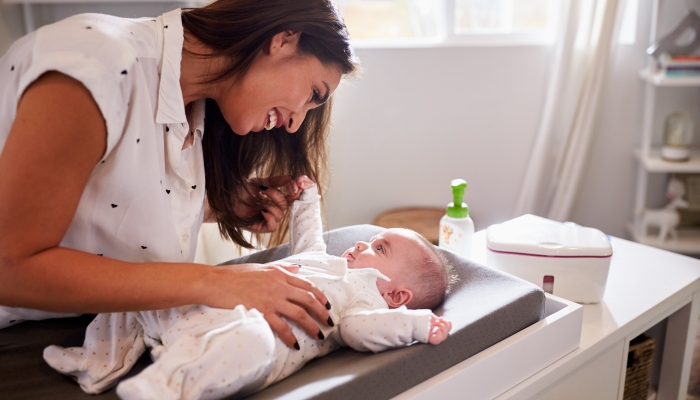
- Parents typically use changing tables until their child turns two or until they exceed the table’s height and weight requirements.
- Alternatives to changing tables include floor changes or changing your baby on the couch or bed.
- Many parents add a changing pad and safety belt to their changing table for extra security.
One of the most exciting parts of having a baby is putting together their nursery. I vividly remember walking through the baby store and picking out my crib, changing table, and all the essentials.
However, I should have considered how fast babies outgrow certain pieces of furniture, like a changing table. Babies don’t keep, so it’s important to know when to stop using the changing table to change your baby’s diaper.
Understanding when to stop using a changing table ensures you keep your baby safe while keeping their bottom clean.
Understanding Changing Tables
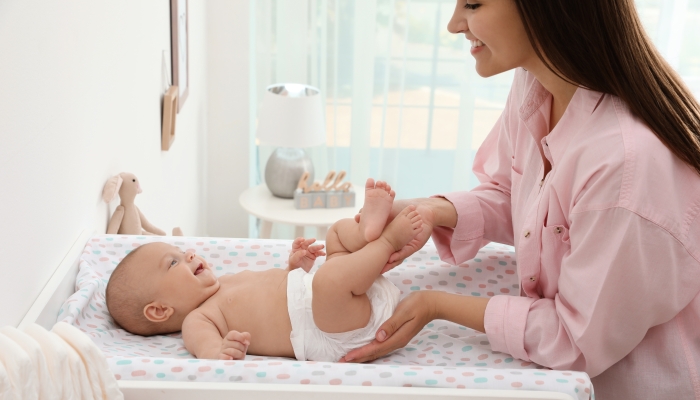
A traditional changing table is a flat surface on furniture used to change your baby’s diapers. Changing tables typically have drawers for supplies like diapers, wipes, and diaper rash creams.
There are various types of changing tables, including:
- Portable changing tables
- Crib changing table combo
- Plastic changing tables
- Wooden changing tables
Why Use a Changing Table?
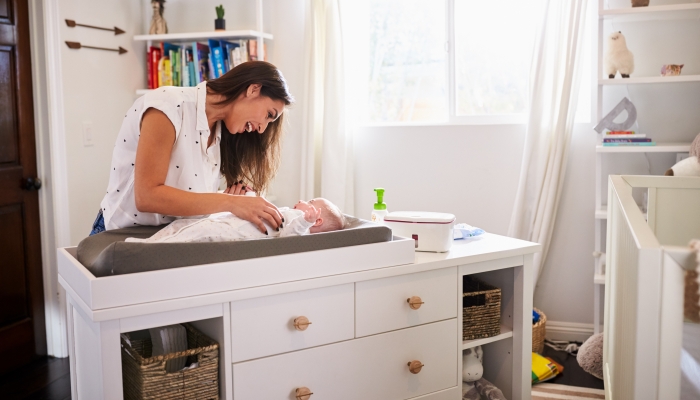
Changing tables makes life easier for parents because it puts everything you need for a diaper change in one place. It’s also an elevated surface to prevent you from having to bend over on the floor.
Changing tables have several benefits, including:
- Extra storage space for all your supplies and baby gear
- Safety straps with a changing pad
- Convenient and comfortable place to change a baby
- Usually has a lip to prevent the baby from falling off
- More comfortable for parents
There is no short answer to why many parents use changing tables. Regardless, knowing when to stop using a changing table is essential, even if it’s a slight inconvenience.
3 Signs It’s Time to Transition From a Changing Table
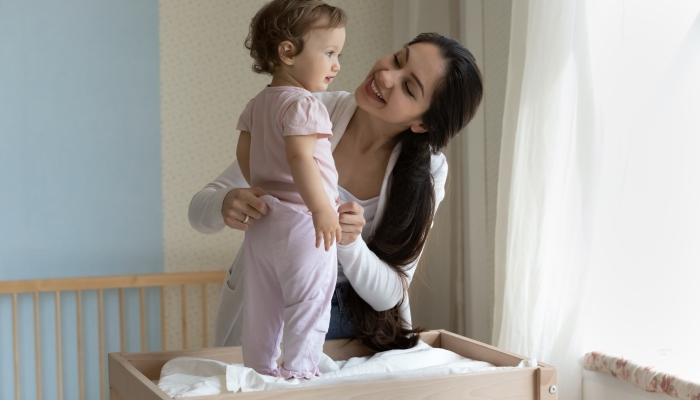
We gathered the top tell-tale signs you should stop using the changing table for your child.
1. Increased Mobility
Once your baby is on the go, diaper changes become increasingly difficult. You’ll also want to find a new changing spot once your growing baby starts rolling because it could cause a safety hazard.
Here are a few safety tips to keep in mind once your child has increased mobility:
- Use a safety belt that is securely attached to the changing table.
- Keep one hand on your baby while you are reaching for diapering supplies.
- Ensure the changing pad can’t slip around the changing table.
- While you want the supplies within your reach, make sure they are out of your baby’s reach.
2. Outgrowing the Changing Table
If your child’s legs dangle off the changing table, it’s probably time to switch to something else. In addition, since weight limits vary, it’s always a good idea to check your specific changing table for weight and height restrictions.
You can check the height and weight limit in the instruction manual or the manufacturer’s website.
Also, if you can’t safely lift your baby, it’s time to remove the changing table altogether. Parents find it harder to lift their little ones as they grow.
3. Behavioral Cues
It’s always a good idea to go off your child’s behavior when you stop using a changing table. While many parents are ready for a change, respecting your child’s autonomy and confidence is also important.
If you receive active resistance for your child, step back and wait a few days to try again. The less you force something, the more your child will be willing to accept the change.
How to Smoothly Transition Away from the Changing Table
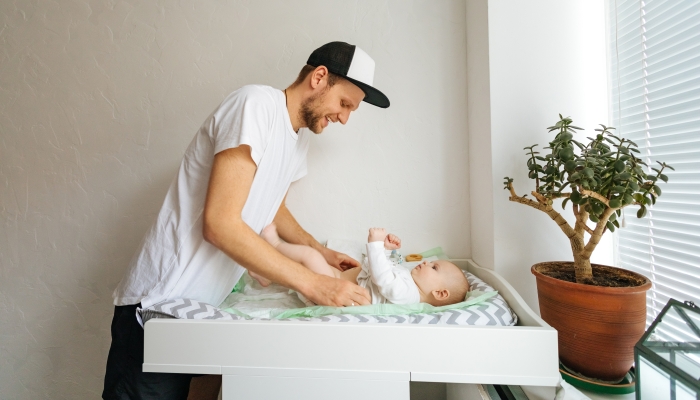
Now let’s discuss how to make a smooth transition as you stop using a changing table.
Gradual Transition
Many parents understand the importance of gradual transitions with their children. You see it with potty training, removing the pacifier, and getting them to sleep in their own room. However, it’s also beneficial when you decide to remove your baby’s changing table or if your toddler won’t listen.
There are several benefits of a gradual approach, including:
- You’re not overwhelming your child with a significant change at once.
- You’re allowing your child time to adjust to the new change.
- Allows your child to stay motivated during the transition.
- It prevents parents from having an all-or-nothing approach.
Here are a few practical tips on how to gradually transition away from the changing table:
- Switch to the new changing spot for one or two diaper changes before making the complete change.
- Talk to your child about why you aren’t changing them in the usual spot, letting them understand the switch.
- Give your child reminders that a change is coming so they aren’t surprised. (Kids sometimes need prompts to remember what we tell them.)
- Make a visual schedule, so they know when the transition will happen.
Positive Reinforcement
Celebrating your child’s achievements with positive reinforcement is a great idea. Depending on your baby’s age, there are several things you can do to show them praise.
Here are a few practical ways to apply positive reinforcement:
- Clapping and cheering for your baby
- Letting them have a special snack
- Give your baby a thumbs up or high-five for an excellent job
- Offer verbal praise and tell them how proud you are
Remember, you aren’t looking for perfection, so make a point to offer positive reinforcement even if things could have gone smoother while changing your child’s diaper.
Maintaining Routine and Familiarity
Children thrive off routine, so you want to make a point not to change things too much. For example, if a changing table comforts your baby or clingy toddler, replicate the setup in your new arrangement.
To keep familiarity, you can change your baby’s diaper in the room they usually are in so the environment doesn’t change.
You can bring the baby supplies and your best diaper pail to the new location so your baby knows what to expect when you change their diaper.
Safe Alternatives to a Changing Table
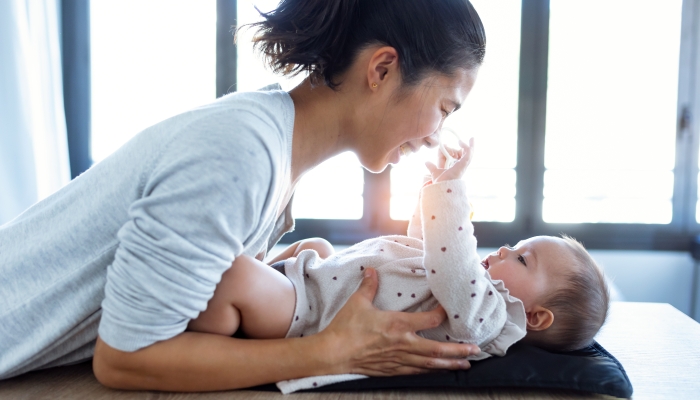
Transition to Floor Changes
Floor changes are great because you don’t have to consider your baby’s weight, and they can’t fall off like they can on a changing table.
If your little one is a mover and a shaker, transitioning to floor changes is a fantastic idea to prevent potential safety hazards but change their diaper. Older toddlers do well with floor changes because they probably got uncomfortable on a changing table due to their size.
The easiest way to make this transition is to lay a blanket or changing mat on the floor and give your little one a toy. I used to keep a changing pad under the couch, so I could easily do a diaper change on the floor without having too many changing supplies around.
If you are working on getting your child potty trained, this allows them to run to the bathroom quickly if they feel the urge.
Use a Bed or a Couch
While you need to be cautious when changing your baby on a bed or couch, it’s a great alternative to changing tables. It’s also comfortable to sit on while you are changing diapers.
If you don’t need your changing table anymore and don’t want to buy a replacement, using a bed or couch is a perfect substitute. Consider laying a changing mat or towel down in case of a diaper blowout.
To prevent a fall risk, ensure you change your baby away from the edge of the couch or bed and that they are fully secure within your reach.
Use a Convertible Changing Table and Dresser
If you have a broken changing table but still like its height and have space in your nursery room, consider using a convertible changing table or dresser. Depending on your baby’s size, it could buy you some time as you decide your next changing station.
You may also consider toddler changing tables, which generally have a higher weight limit, but it won’t prevent your child from wiggling around.
In addition, if you are crafty, you can change an old dresser into a changing table. You can add a changing mat with a safety belt and a basket for supplies.
Remember to always keep one hand on your baby while reaching for diapers and additional changing supplies.
While there are pros to using a convertible changing table or dresser, remember, as your baby grows, they likely will outgrow it.
FAQs
What are the safety risks of using a changing table after my child has outgrown it?
One of the most significant safety risks of changing tables is children falling off. The Centers for Disease Control and Prevention reports that falls are one of the most common causes of children’s nonfatal injuries11. Injuries Among Children and Teens. Centers for Disease Control and Prevention. 2021. https://www.cdc.gov/injury/features/child-injury/index.html.
Luckily, children have tough skulls, but practicing safety during diaper changes is still important.
How can I repurpose a changing table after my baby has outgrown it?
I turned my old changing table into an arts and crafts table for my kids. It was a great way to repurpose furniture that gave me so much use. You can also use it as a bookshelf or toy storage.
Does transitioning away from a changing table have psychological impacts on toddlers?
Any life change can significantly impact a child, which is why it’s important to know how to handle the transition. However, transitioning from a changing table doesn’t rank high on psychological impacts on a toddler. Instead, a 2019 study by Li, et al published in the Frontiers of Psychology22. Li, M., Li, W.-Q., & Li, L. M.. Sensitive Periods of Moving on Mental Health and Academic Performance Among University Students. Frontiers in Psychology. 2019;10. https://doi.org/10.3389/fpsyg.2019.01289 listed that moving had the most significant impact on a child’s mental health.
References
- Injuries Among Children and Teens. Centers for Disease Control and Prevention. (2021, September 22). https://www.cdc.gov/injury/features/child-injury/index.html
- Li, M., Li, W.-Q., & Li, L. M. (2019). Sensitive Periods of Moving on Mental Health and Academic Performance Among University Students. Frontiers in Psychology, 10. https://doi.org/10.3389/fpsyg.2019.01289
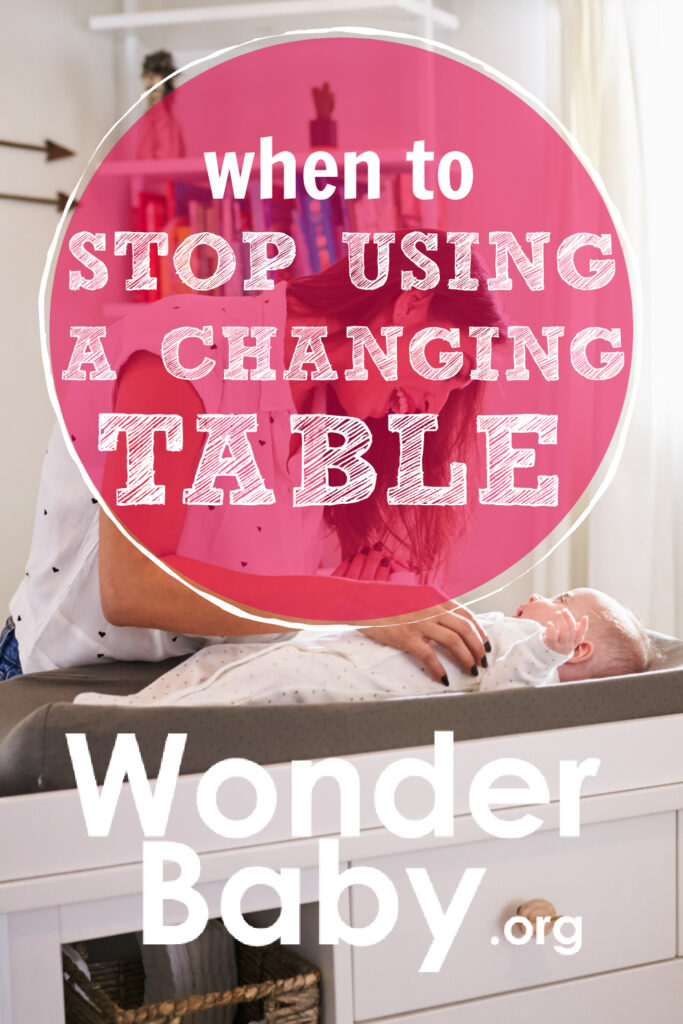
Related Posts
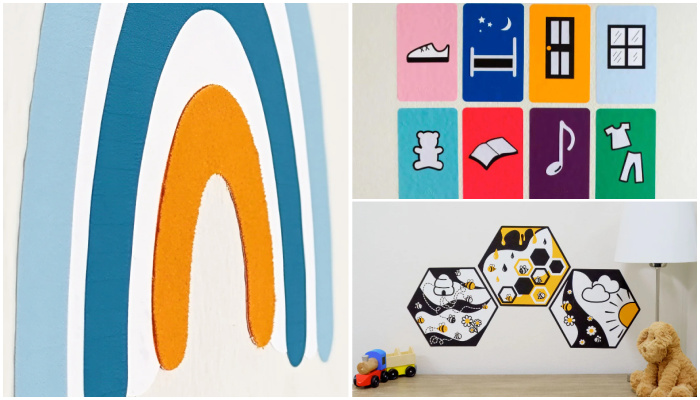
Parenting
Sensory Wall Art: 5 Tips to Create a Room Your Blind or Low-Vision Child Will Love
Even if your child can’t see their surroundings, personalizing and decorating their room with thoughtful, sensory-friendly design can make a big difference in their confidence, independence, and joy.
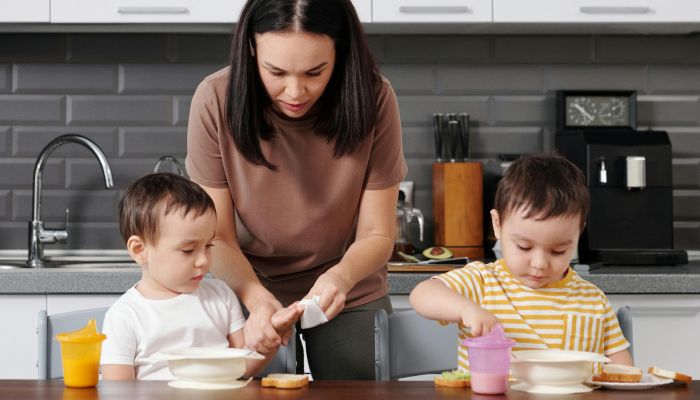
Parenting
4 Tips to Manage Twins Alone as a Single Parent
Taking care of twins alone as a single parent can feel overwhelming. Learn practical ways to help lighten the load.
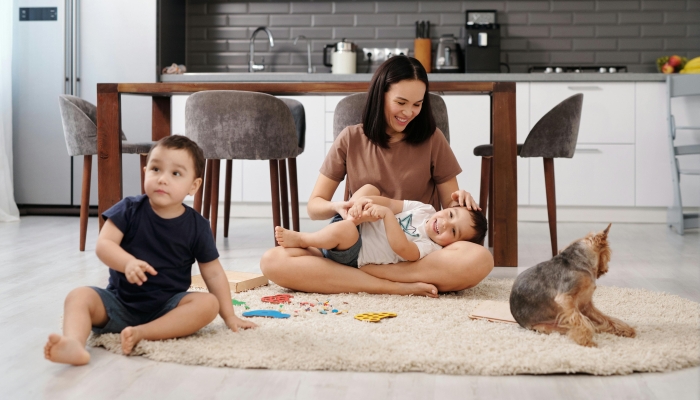
Parenting
How to Manage Twin Escalation Syndrome
Discover effective strategies for managing twin escalation syndrome, including promoting individuality and fostering positive interactions.